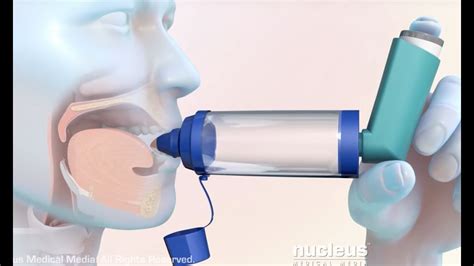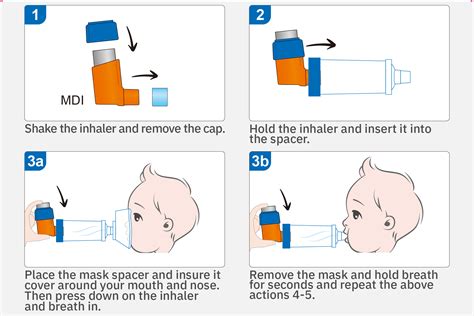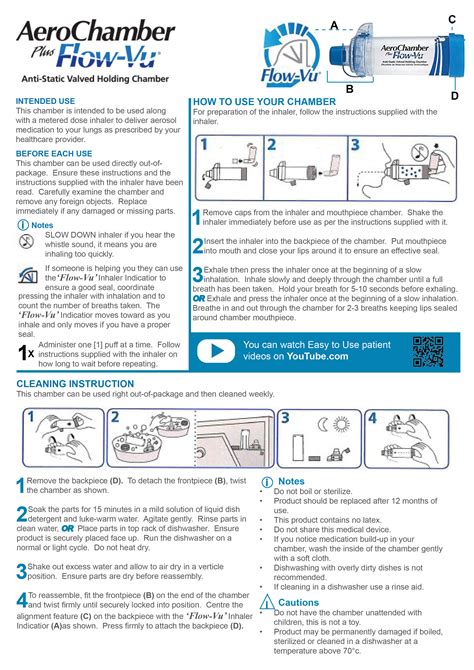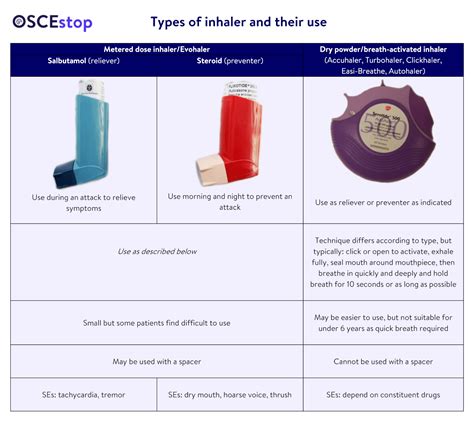Intro
Master breathing techniques with 5 tips for inhaler spacers, improving asthma management, inhalation therapy, and respiratory health using spacer devices and inhaler accessories.
Using an inhaler spacer can significantly improve the effectiveness of your inhaler medication, making it easier to breathe and manage respiratory conditions like asthma. An inhaler spacer is a device that attaches to your inhaler, holding the medication in a chamber, allowing you to breathe it in more slowly and effectively. This is particularly useful for people who have difficulty coordinating the inhalation with the actuation of the inhaler or for those who need help ensuring they get the full dose of medication.
Inhaler spacers are beneficial for both children and adults, as they can enhance the delivery of medication to the lungs, reduce side effects, and improve overall control of asthma symptoms. When used correctly, an inhaler spacer can make a significant difference in how well your medication works. However, to get the most out of an inhaler spacer, it's crucial to understand how to use it properly and to maintain it regularly.
The importance of proper inhaler technique cannot be overstated. Incorrect use can lead to reduced medication effectiveness, increased symptoms, and potentially, more frequent use of rescue inhalers. This not only affects the management of the condition but can also have implications for the overall quality of life. By mastering the use of an inhaler spacer, individuals can better manage their respiratory health, reduce the risk of complications, and improve their day-to-day well-being.
Benefits of Using an Inhaler Spacer

Using an inhaler spacer offers several benefits, including improved medication delivery, reduced side effects, and easier use, especially for children or individuals with limited hand strength or coordination. The spacer acts as a reservoir, holding the medication after it's released from the inhaler, allowing the user to breathe in slowly and naturally, which helps in delivering the medication more effectively to the lungs. This can lead to better control of asthma symptoms and a reduction in the frequency of asthma attacks.
Improved Medication Delivery
The primary advantage of an inhaler spacer is its ability to improve the delivery of medication to the lungs. By holding the medication in a chamber, it gives the user time to inhale the medication slowly, ensuring that more of the dose reaches the lungs where it's needed, rather than being deposited in the mouth or throat. This can lead to more effective symptom relief and better overall management of respiratory conditions.Reduced Side Effects
Another significant benefit of using an inhaler spacer is the reduction in side effects associated with inhaler medication. When medication is inhaled directly without a spacer, it can sometimes cause throat irritation or other local side effects. The spacer helps to reduce these side effects by mixing the medication with air and allowing it to be inhaled more gently.How to Use an Inhaler Spacer

Using an inhaler spacer involves several steps that, when followed correctly, can ensure you get the most out of your medication. Here's a step-by-step guide on how to use an inhaler spacer effectively:
- Prepare Your Inhaler and Spacer: Before use, ensure your inhaler and spacer are clean and free from any blockages. Follow the manufacturer's instructions for cleaning and maintenance.
- Attach the Inhaler to the Spacer: Connect your inhaler to the spacer according to the manufacturer's instructions. Different spacers may have slightly different attachment mechanisms.
- Shake the Inhaler: Before use, shake the inhaler well to mix the medication properly.
- Actuate the Inhaler: With the inhaler attached to the spacer, press the inhaler once to release one dose of medication into the spacer. You should see the medication mist inside the spacer.
- Inhale Slowly: Place the mouthpiece of the spacer in your mouth, seal your lips around it, and inhale slowly and deeply through your mouth. Try to breathe in for about 3 to 5 seconds.
- Hold Your Breath: After inhaling, hold your breath for 10 seconds to allow the medication to settle in your lungs.
- Exhale Slowly: Slowly breathe out through your mouth.
Tips for Effective Use
- **Use One Breath**: Try to inhale the entire dose in one slow, deep breath. If you need to take another breath, remove the spacer from your mouth and breathe out before inhaling again. - **Clean the Spacer Regularly**: Regular cleaning is essential to prevent the buildup of medication residue and bacteria. Follow the manufacturer's cleaning instructions. - **Check for Blockages**: Ensure the spacer and inhaler are free from blockages before each use.Maintenance and Cleaning of Inhaler Spacers

Proper maintenance and cleaning of your inhaler spacer are crucial for its effectiveness and your health. Here are some tips on how to clean and maintain your inhaler spacer:
- Daily Cleaning: Rinse the spacer with warm water after each use to prevent medication buildup.
- Weekly Disinfection: Once a week, soak the spacer parts in a mixture of water and mild detergent, then rinse thoroughly and let air dry.
- Replace as Recommended: Follow the manufacturer's guidelines for replacing the spacer. Typically, spacers need to be replaced every 6 to 12 months or as recommended.
Importance of Regular Cleaning
Regular cleaning prevents the growth of bacteria and mold inside the spacer, which can lead to infections or reduce the effectiveness of your medication. It also ensures that the spacer functions properly, delivering the correct dose of medication with each use.Choosing the Right Inhaler Spacer

With various inhaler spacers available, choosing the right one can be a bit overwhelming. Here are some factors to consider when selecting an inhaler spacer:
- Compatibility: Ensure the spacer is compatible with your inhaler. Different inhalers may require specific spacers.
- Size and Portability: Consider a spacer that is compact and lightweight, making it easier to carry with you.
- Ease of Use: Opt for a spacer with a simple design that is easy to use and clean.
- Cost: Spacers can vary in price. Consider the cost in relation to the benefits and your budget.
Consulting with a Healthcare Professional
It's always a good idea to consult with a healthcare professional or pharmacist when choosing an inhaler spacer. They can provide recommendations based on your specific needs, the type of medication you're using, and any other health considerations.Common Mistakes to Avoid

When using an inhaler spacer, there are several common mistakes to avoid to ensure you get the full benefit of your medication:
- Not Shaking the Inhaler: Failing to shake the inhaler before use can lead to inconsistent dosing.
- Inhaling Too Quickly: Inhaling too quickly can result in the medication being deposited in the throat rather than the lungs.
- Not Holding Breath Long Enough: Failing to hold your breath for the recommended 10 seconds can reduce the effectiveness of the medication.
Importance of Proper Technique
Proper technique is crucial for the effective use of an inhaler spacer. Incorrect use can lead to reduced medication efficacy, increased side effects, and poor control of asthma symptoms. Regularly review the instructions and consult with a healthcare professional if you're unsure about any aspect of using your inhaler spacer.Conclusion and Next Steps

Incorporating an inhaler spacer into your asthma management plan can significantly improve the effectiveness of your medication and your overall quality of life. By understanding the benefits, proper use, and maintenance of inhaler spacers, you can better manage your respiratory health. Remember, it's essential to consult with a healthcare professional for personalized advice and to address any questions or concerns you may have.
We invite you to share your experiences with inhaler spacers, ask questions, or seek further information in the comments below. Your engagement can help others understand the importance and proper use of inhaler spacers in managing respiratory conditions.
What is the main benefit of using an inhaler spacer?
+The main benefit of using an inhaler spacer is that it improves the delivery of medication to the lungs, making it easier to breathe and manage respiratory conditions like asthma.
How often should I clean my inhaler spacer?
+It's recommended to rinse your inhaler spacer with warm water after each use and to disinfect it once a week with a mixture of water and mild detergent.
Can I use any inhaler with an inhaler spacer?
+No, not all inhalers are compatible with all spacers. It's essential to check the compatibility of your inhaler with the spacer before use and to follow the manufacturer's instructions.
